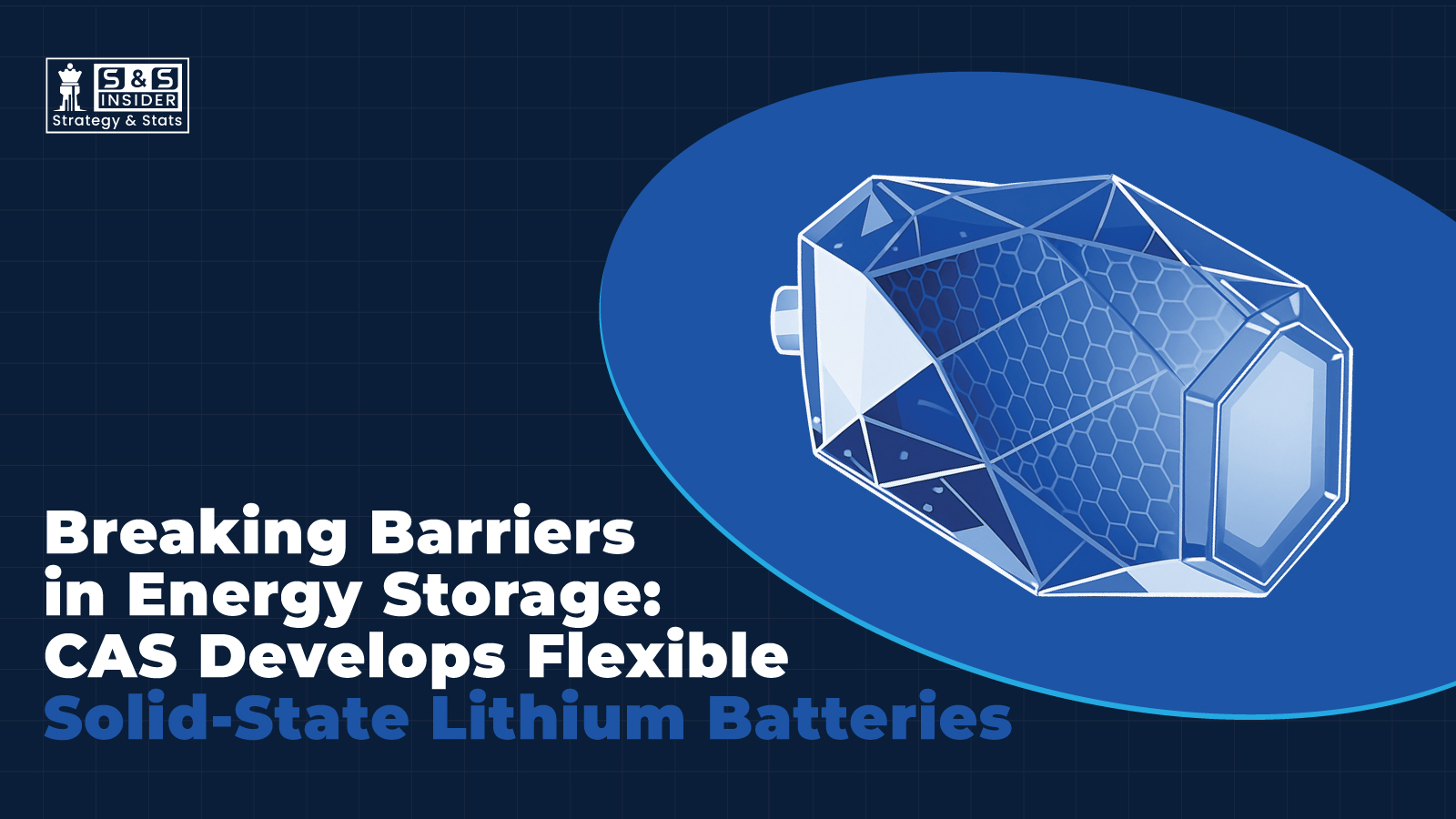
The Chinese Academy of Sciences (CAS) has recently announced a groundbreaking breakthrough in the field of solid-state batteries, a development poised to significantly impact electric vehicles, portable electronics, and various other high-performance energy storage applications. This achievement marks a critical milestone in advancing solid-state battery technology, bringing us closer to safer, more efficient, and higher-capacity embedded memory storage systems.
Breakthrough in Flexible Solid-State Batteries:
According to recent reports, researchers from the CAS’s Institute of Metal Research have developed a flexible solid-state lithium battery that boasts remarkable high energy density and exceptional stability. Utilizing innovative polymer molecules, the new battery design addresses one of the longstanding challenges in solid-state batteries, the poor solid-solid interface between the electrode and the electrolyte, which often results in high ion transport resistance and low efficiency.
Thanks to the incorporation of polymer molecules with ethoxy groups and electrochemically active sulfur chains, the research team created a material that exhibits high ion transport capabilities and the ability to switch seamlessly between ion transfer and storage. The results showed a significant increase in energy density of up to 86%, promising a new era in battery performance. Impressively, the battery can endure up to 20,000 bends without performance degradation, demonstrating high flexural resistance, a critical attribute for embedded memory storage in flexible electronic devices and electric vehicles (EVs).
Addressing Safety and Efficiency Challenges:
Solid-state batteries are considered the future of safe energy storage because they eliminate the risks associated with electrolyte leakage, a common issue in liquid electrolyte batteries. Despite their potential, development hurdles such as interfacial instability and low ion mobility have slowed their commercialization. The CAS breakthrough tackles this by introducing a polymer-based material featuring ion-conducting ethoxy groups and sulfur chains. This design ensures close electrode-electrolyte contact, even under low external pressure, which has traditionally hampered performance.
Furthermore, the research incorporates dynamic interphase technology, where iodide ions migrate toward the electrode interface during operation, forming a protective, iodine-rich layer that actively fills pores and gaps. This strategy significantly enhances the safety and long-term stability of the solid-state batteries, ensuring they can operate efficiently over hundreds of charge-discharge cycles without performance loss.
Implications for Electric Vehicles and Consumer Electronics:
The implications of this breakthrough extend across multiple industries. In electric vehicles, solid-state batteries could provide higher energy densities, potentially exceeding 500 Wh/kg, which is resulting in longer driving ranges and faster charging times. The safety benefits, combined with their flexibility and durability, make solid-state batteries an attractive option for EVs and smart devices.
In the consumer electronics sector, flexible batteries can revolutionize portable devices, wearable technology, and embedded memory storage solutions, enabling slimmer, lightweight, and more resilient gadgets. The high stability under repeated bending and the absence of electrolyte leakages further improve reliability, as well as safety, during everyday use.
Industry Progress and the Road Ahead:
Many Chinese companies are already moving forward with solid-state battery development, with pilot production facilities operational or in planning stages. For example, Farasis Energy has announced the beginning of pilot production of sulfide-based solid-state batteries, while Chery-backed Anhui Anwa New Energy has rolled out engineering samples of such batteries.
While these technological advancements mark a crucial step, mass commercialization of solid-state batteries in electric vehicles and consumer electronics remains on the horizon, with estimates pointing towards broader market penetration around 2027. Industry experts are optimistic, but also cautious, emphasizing the need for continued research and pilot testing to overcome remaining manufacturing and cost challenges.
Conclusion:
The recent announcement by the Chinese Academy of Sciences underscores a significant turning point in solid-state battery research. Their innovative approach, featuring flexible, high-energy-density, and safe batteries, addresses critical issues such as interface instability and poor ion transport. These innovations promise to accelerate the adoption of solid-state batteries in embedded memory storage, gaming consoles, electric vehicles, and beyond.
The road to commercial deployment might still have hurdles, but with the active involvement of leading research institutes and industry players, the era of safer, more efficient, and higher-capacity solid-state batteries appears closer than ever. This breakthrough not only heralds a new chapter in energy storage technology but also paves the way for smarter, more resilient, and energy-efficient devices across the globe.
Source- Meroauto